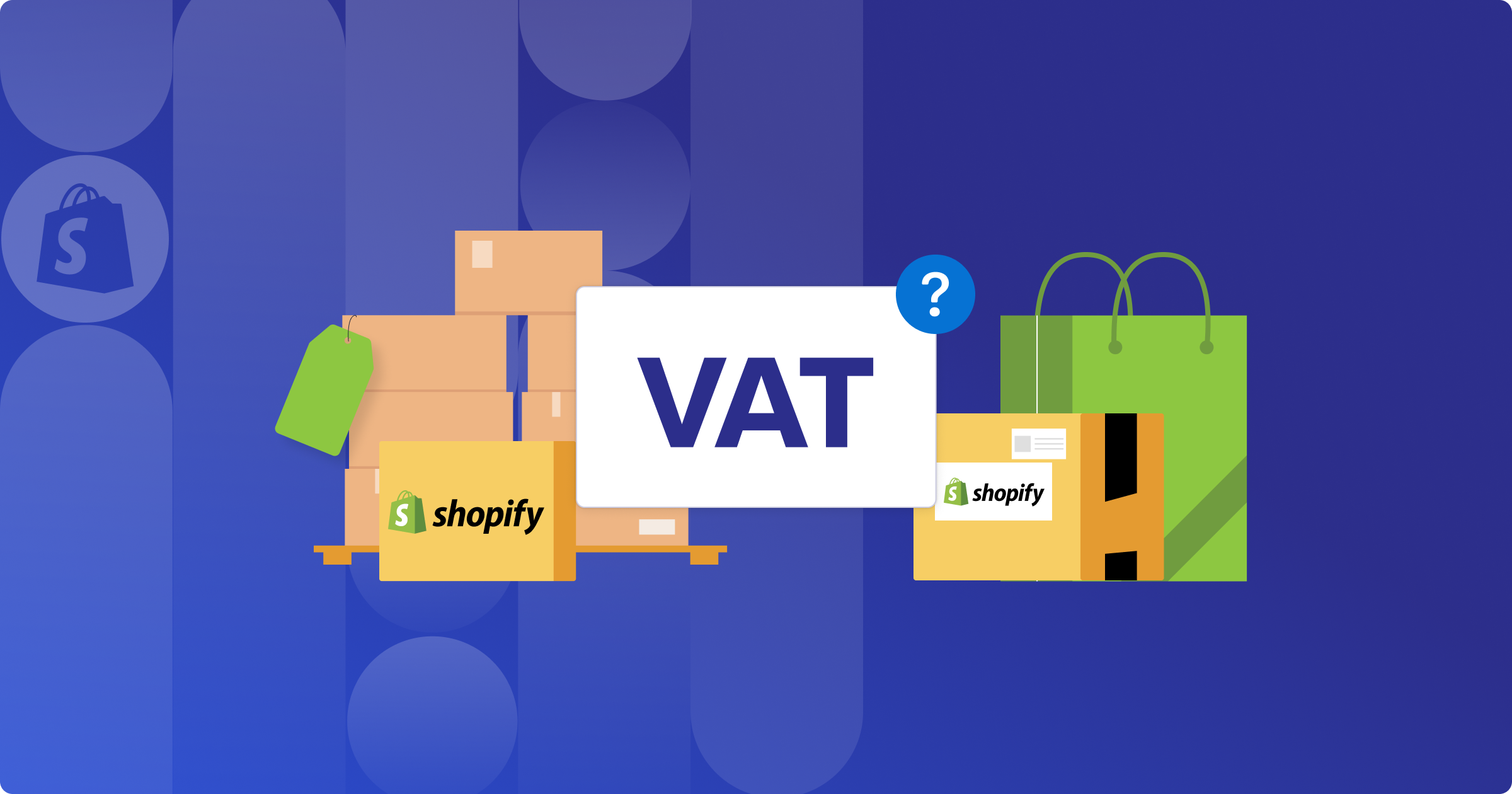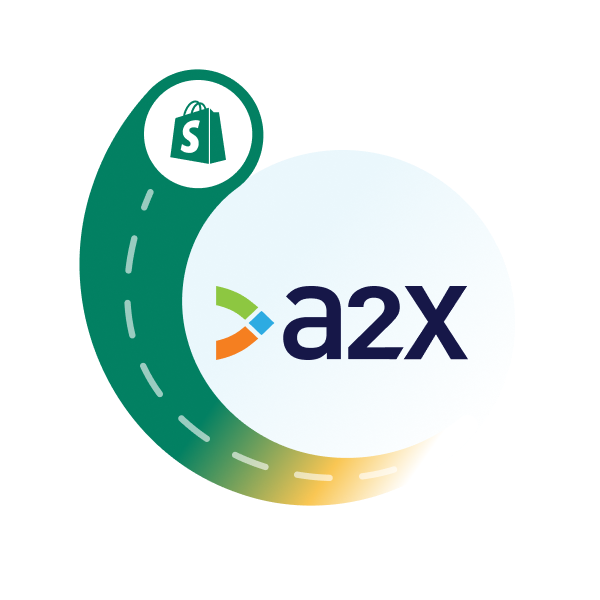VAT on Shopify Merchant Fees [Guide]
Written by: Elspeth Cordray

For many Shopify merchants, understanding VAT (Value Added Tax) and its implications on Shopify selling fees can be challenging. This guide aims to help you understand how VAT applies to Shopify merchant fees and what steps you need to take to remain compliant.
Important notes:
- This guide primarily focuses on VAT for Shopify merchants who are based in the UK.
- The information provided is general. To fully understand your specific VAT obligations, it’s essential to consult a VAT advisor.
Quick review: What is VAT?
VAT (Value Added Tax) is a tax that must be charged on most sales of goods and services to customers within the UK and the EU. If you’re a VAT-registered business in the UK, you’re required to add VAT to your sales, collect it from your customers, and then remit it to HMRC.
Whether or not Shopify charges VAT on its fees depends on where your business is located and whether or not you are VAT-registered. Understanding your VAT obligations is essential for staying compliant with UK tax laws, so it’s important to keep accurate records and consult a VAT advisor to ensure you’re meeting all requirements.
Which Shopify merchant/platform fees are subject to VAT?
In the UK, several types of fees can be subject to VAT, including:
Subscription fees – The monthly or annual fees you pay to Shopify for using the platform.
Transaction fees – If you’re not using Shopify Payments and are using a third-party payment provider, Shopify charges transaction fees on each sale.
Shipping fees – Fees for using Shopify’s shipping services.
App and theme purchases – Any purchases made through the Shopify App Store or Theme Store may be subject to VAT if the provider is VAT-registered.
For Shopify businesses in the UK who are not VAT registered, VAT will typically be charged on their Shopify fees, and they will see this reflected on their Shopify invoices. However, since they are not VAT registered, they cannot reclaim this VAT.
For Shopify sellers in the UK who are VAT registered, the platform does not charge VAT on their fees. Instead, these fees are handled using the reverse charge mechanism, where the seller accounts for both input and output VAT on their VAT return, resulting in a neutral effect on their VAT liability.
VAT on Shopify fees is subject to the reverse charge mechanism
Shopify merchants in the UK who are VAT-registered and have a valid VAT number cannot reclaim VAT on Shopify fees because these fees are subject to the reverse charge mechanism.
The reverse charge mechanism is a VAT accounting procedure where the responsibility for reporting VAT shifts from the service provider (Shopify) to the buyer (the Shopify merchant). This means that instead of Shopify charging VAT on their fees, the merchant must account for both the input and output VAT on the transaction.
For UK-based Shopify merchants, the reverse charge mechanism is applied because Shopify, as a non-UK company, provides services from the Republic of Ireland (where Shopify’s European operations are based).
In practice:
- Shopify charges fees without VAT.
- The merchant calculates the VAT that would have been charged and reports it on their VAT return as both a payable (output) and receivable (input) VAT.
This often results in no net VAT payment but ensures the transaction is recorded correctly for VAT purposes.
This mechanism helps streamline VAT collection and ensures that VAT is properly accounted for across borders.
Accounting for VAT on Shopify fees: Step-by-step guide
As explained earlier, VAT on Shopify fees is subject to the reverse charge mechanism, meaning that merchants don’t need to worry about reclaiming VAT on these fees.
However, Shopify merchants are responsible for correctly reporting VAT on their VAT returns to ensure compliance.
A2X is an accounting automation tool that simplifies managing VAT on platform fees for merchants.
A2X will automatically pull your Shopify sales and transaction data and allocate all transactions to the appropriate accounts in your general ledger. For VAT on Shopify fees, A2X will automatically track the VAT associated with Shopify fees and categorise it correctly – making it easier to complete your VAT returns with accuracy and confidence.
Here’s a quick overview of how A2X works to import Shopify transaction data into Xero:
Here’s a step-by-step guide on how to account for VAT on Shopify fees using A2X.
1. Set up A2X
Setting up A2X is easy and takes just a few minutes.
- Sign up for A2X – No credit card is needed, and you’ll remain in “trial mode” until you decide to subscribe.
- Connect A2X to your accounting software (Xero, QuickBooks Online, or Sage). All you need is your login info for your accounting software.
- Connect A2X to Shopify. All you need is your Shopify store login.
- Map your Shopify transactions to your Chart of Accounts. A2X has a questionnaire that can help you set this up quickly and easily.
A2X can map Shopify fees to an expense account, and you can apply the reverse charge expense tax rate to capture VAT on these fees.
2. Send Shopify transaction data from A2X to your accounting software
Go to the ‘Payouts’ tab in A2X. This is where you can see all of the payouts that A2X has fetched from Shopify.
If you click on the date of a payout, you’ll be able to see how A2X has identified VAT on Shopify fees and how it will categorise it in your accounting system.
Scroll down and click ‘Send to [Your accounting software]’ to send the data to your accounting software for reconciliation.
3. Report on your VAT return
When completing your VAT return:
- Report the value of Shopify fees in Box 6 (total value of sales and other outputs, excluding VAT).
- Record the VAT amount in Box 1 (VAT due on sales and other outputs).
- Include the VAT figure in Box 4 (VAT reclaimed on purchases and other inputs).
- Enter the amount in Box 7 (purchase value).
The overall effect on the VAT owed to HMRC is typically zero, but this ensures the transaction is accurately recorded.
Note: Xero and QuickBooks Online can automate this process when you select the reverse charge expenses rate. However, be aware that this feature is only available in UK versions of Xero and QuickBooks with a VAT module, not in global editions.
4. Keep records
In addition to your accounting software, you can also keep VAT records by downloading your VAT invoices from Shopify:
- Log in to your Shopify store and go to ‘Settings’.
- Click on ‘Billing’ in the ‘Settings’ menu.
- Scroll down to ‘Billing history’ to find your invoices.
- Click ‘View’ or ‘Download’ next to the invoice you need.
- Ensure the invoice includes VAT details for your records.
Questions about Shopify VAT?
Navigating your VAT responsibilities as a Shopify merchant in the UK can be challenging! Fortunately, there are skilled accountants and bookkeeping experts who specialise in working with Shopify merchants and are ready to help.
Find a Shopify accountant or bookkeeper on the A2X Ecommerce Accountant Directory.

Integrate Shopify and your accounting software for accurate accounting
A2X auto-categorizes your Shopify sales, fees, taxes, and more into accurate summaries that make reconciliation in your general ledger a breeze.
Try A2X today
